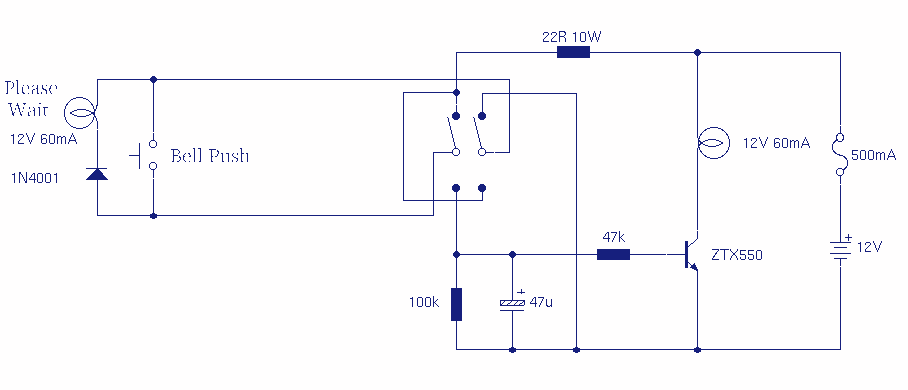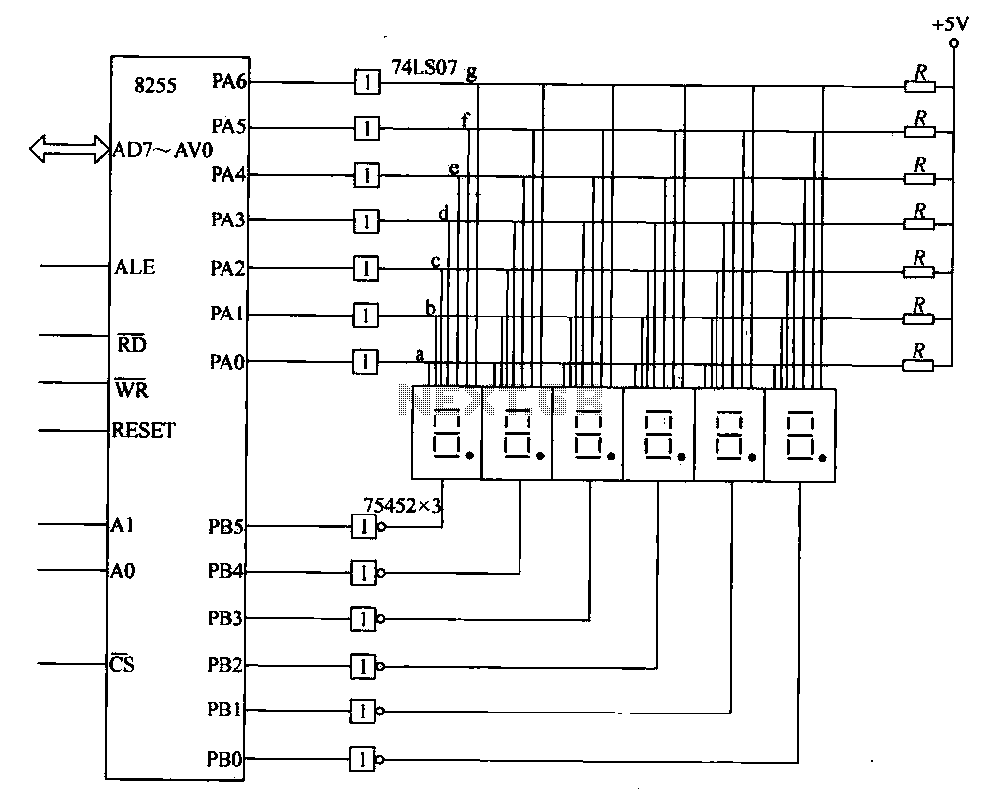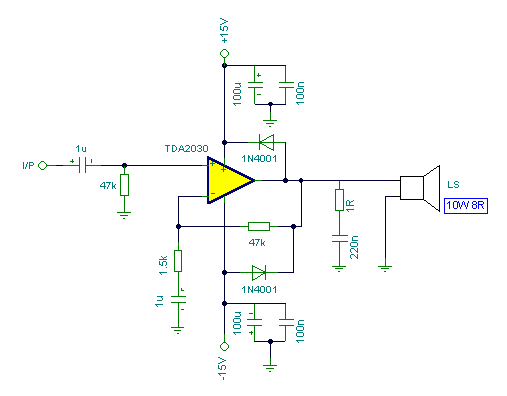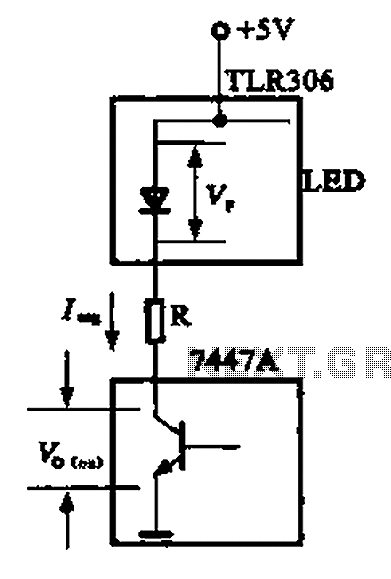
Stepping CS6061A touch dimmer light circuit

The CS6061A integrated circuit is designed for touch-step dimming lights. It features a two-state female switching function and is reliable, capable of adapting to long cables and larger touch-sensitive pad loads (400pF). The collector circuit of the CS6061A utilizes a CMOS process, ensuring low power consumption and ease of use. It is primarily packaged in a standard DIP-8 configuration. The pin functions are as follows: OC (oscillation control), K (trimming resistor for correction of intermediate states), FL (luminance), VDJ (zero-crossing synchronization signal input), TI (touch signal input), CI (external vibration resistance terminal), CG (switch state control), and AT (trigger pulse output for direct thyristor driving). The CS6061A operates at a voltage of 5V.
The CS6061A integrated circuit provides a sophisticated solution for touch-sensitive lighting applications, enabling users to control light intensity through a simple touch interface. The two-state switching function allows for basic on/off control or dimming capabilities, making it versatile for various lighting environments. The capability to accommodate long cable runs and larger capacitive loads (up to 400pF) enhances its applicability in larger installations or where touch-sensitive pads are required to cover more extensive areas.
The CMOS technology employed in the CS6061A is notable for its low power consumption, which is critical in battery-operated devices or energy-efficient systems. The DIP-8 package format facilitates easy integration into existing circuits, allowing for straightforward prototyping and deployment in consumer electronics.
Each pin of the CS6061A plays a distinct role in its operation. The OC pin is utilized for oscillation control, allowing for fine-tuning of the circuit's performance. The K pin serves as a trimming resistor, which can be adjusted to correct the intermediate states of brightness. The FL pin provides luminance feedback, ensuring that the light output remains consistent with user input.
The VDJ pin is essential for synchronizing the circuit with the AC mains, utilizing a zero-crossing detection method to minimize electrical noise and flicker. The TI pin receives touch signals, enabling the user to control lighting with a simple touch. The CI pin allows for external resistance to be added, which can modify the sensitivity of the touch interface; increasing resistance enhances sensitivity, while decreasing it reduces sensitivity.
The CG pin controls the switch state, providing flexibility in operation modes. The AT pin outputs a trigger pulse, which can be used to drive external components such as thyristors, enabling the control of larger loads. This feature is particularly beneficial in applications requiring higher power management.
Overall, the CS6061A integrated circuit stands out as a reliable and efficient solution for modern touch-sensitive lighting control, suitable for both residential and commercial applications. Its combination of functionality, low power consumption, and ease of integration makes it a valuable component in contemporary electronic designs. CS6061A integrated circuit fabrication is the use of touch-step dimming lights, it has two state of the female state switching function, and J as reliable, able to adapt to lon g cable and a larger touch-sensitive pad load (400pF). CS6061A collector circuit using CMOS process with low power consumption, so easy to use and other characteristics, mainly for the package standard DIP-8 package. (, S6061A the pin function as follows pins. OC, K, the oscillation control system ends, trimming R; can be corrected intermediate state. Luminance pin Fl, zero-crossing synchronization signal input terminal pin VDJ, is. positive power input port. pin TI, a touch signal input. pin CI, the external vibration resistance, electrical terminal hole in a wall, increasing R (, value can increase the touch sensitivity, and vice versa reduced.
pin CG, the switch state control terminal, when a CG], two state; when C ( O, four-state pin V s, the negative terminal of the power supply pins AT, trigger pulse output terminal that can directly drive thyristor. CS6061A L as a voltage 5-c.sv.
The CS6061A integrated circuit provides a sophisticated solution for touch-sensitive lighting applications, enabling users to control light intensity through a simple touch interface. The two-state switching function allows for basic on/off control or dimming capabilities, making it versatile for various lighting environments. The capability to accommodate long cable runs and larger capacitive loads (up to 400pF) enhances its applicability in larger installations or where touch-sensitive pads are required to cover more extensive areas.
The CMOS technology employed in the CS6061A is notable for its low power consumption, which is critical in battery-operated devices or energy-efficient systems. The DIP-8 package format facilitates easy integration into existing circuits, allowing for straightforward prototyping and deployment in consumer electronics.
Each pin of the CS6061A plays a distinct role in its operation. The OC pin is utilized for oscillation control, allowing for fine-tuning of the circuit's performance. The K pin serves as a trimming resistor, which can be adjusted to correct the intermediate states of brightness. The FL pin provides luminance feedback, ensuring that the light output remains consistent with user input.
The VDJ pin is essential for synchronizing the circuit with the AC mains, utilizing a zero-crossing detection method to minimize electrical noise and flicker. The TI pin receives touch signals, enabling the user to control lighting with a simple touch. The CI pin allows for external resistance to be added, which can modify the sensitivity of the touch interface; increasing resistance enhances sensitivity, while decreasing it reduces sensitivity.
The CG pin controls the switch state, providing flexibility in operation modes. The AT pin outputs a trigger pulse, which can be used to drive external components such as thyristors, enabling the control of larger loads. This feature is particularly beneficial in applications requiring higher power management.
Overall, the CS6061A integrated circuit stands out as a reliable and efficient solution for modern touch-sensitive lighting control, suitable for both residential and commercial applications. Its combination of functionality, low power consumption, and ease of integration makes it a valuable component in contemporary electronic designs. CS6061A integrated circuit fabrication is the use of touch-step dimming lights, it has two state of the female state switching function, and J as reliable, able to adapt to lon g cable and a larger touch-sensitive pad load (400pF). CS6061A collector circuit using CMOS process with low power consumption, so easy to use and other characteristics, mainly for the package standard DIP-8 package. (, S6061A the pin function as follows pins. OC, K, the oscillation control system ends, trimming R; can be corrected intermediate state. Luminance pin Fl, zero-crossing synchronization signal input terminal pin VDJ, is. positive power input port. pin TI, a touch signal input. pin CI, the external vibration resistance, electrical terminal hole in a wall, increasing R (, value can increase the touch sensitivity, and vice versa reduced.
pin CG, the switch state control terminal, when a CG], two state; when C ( O, four-state pin V s, the negative terminal of the power supply pins AT, trigger pulse output terminal that can directly drive thyristor. CS6061A L as a voltage 5-c.sv.





